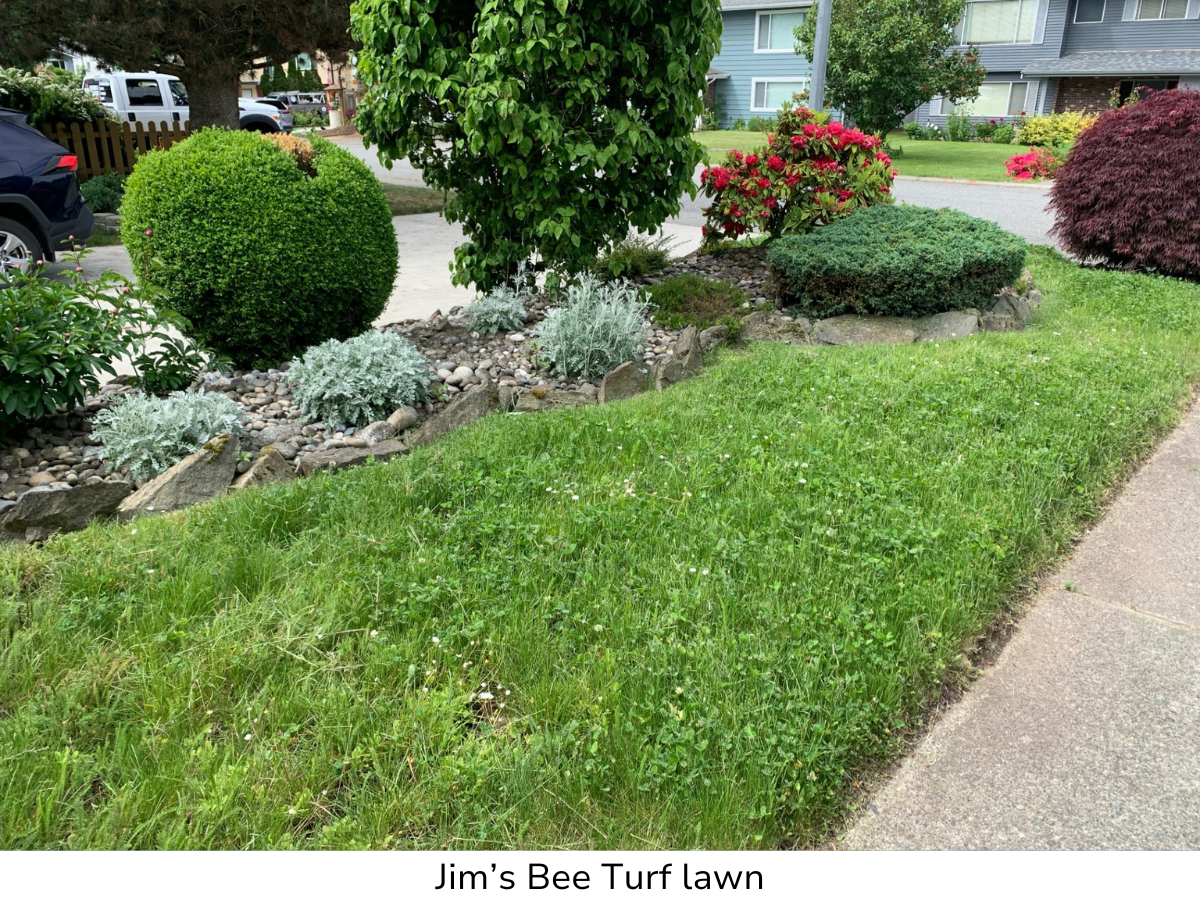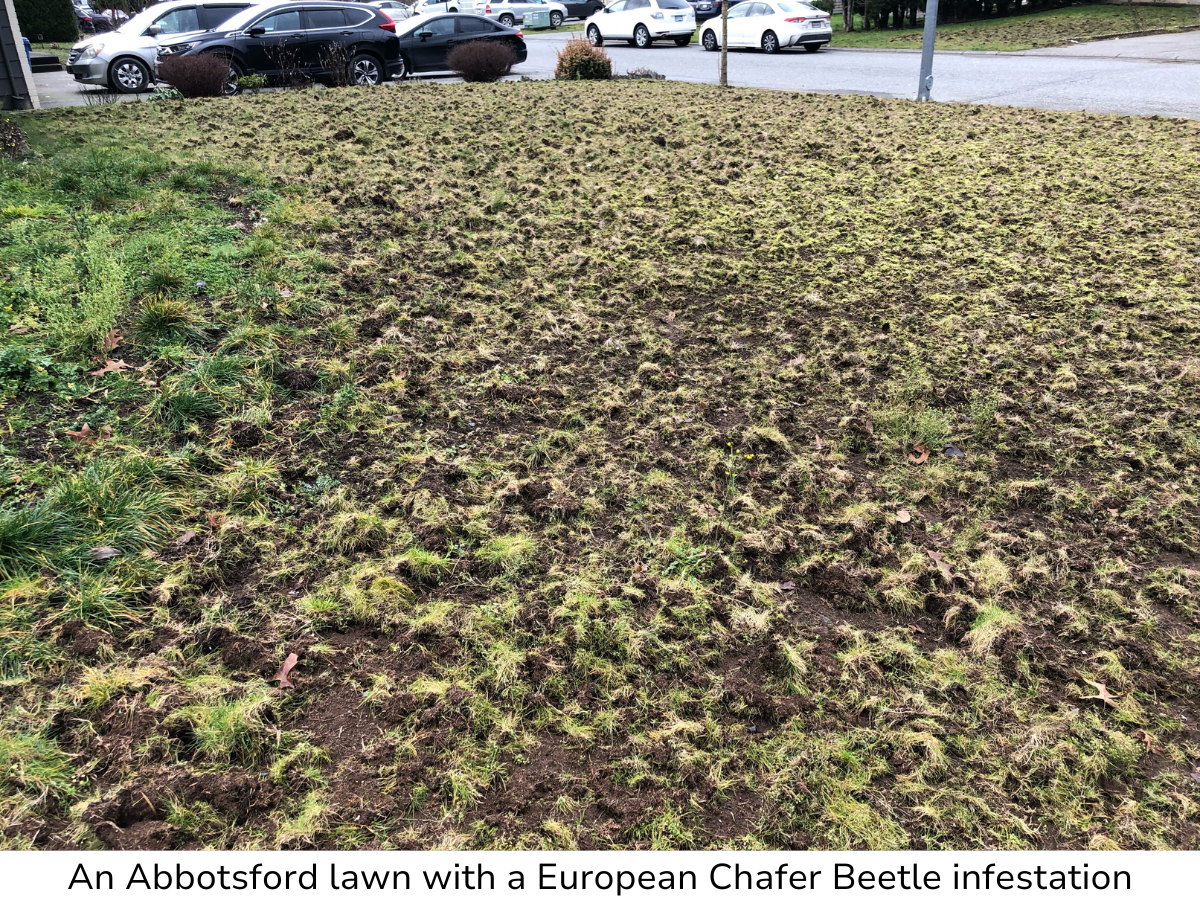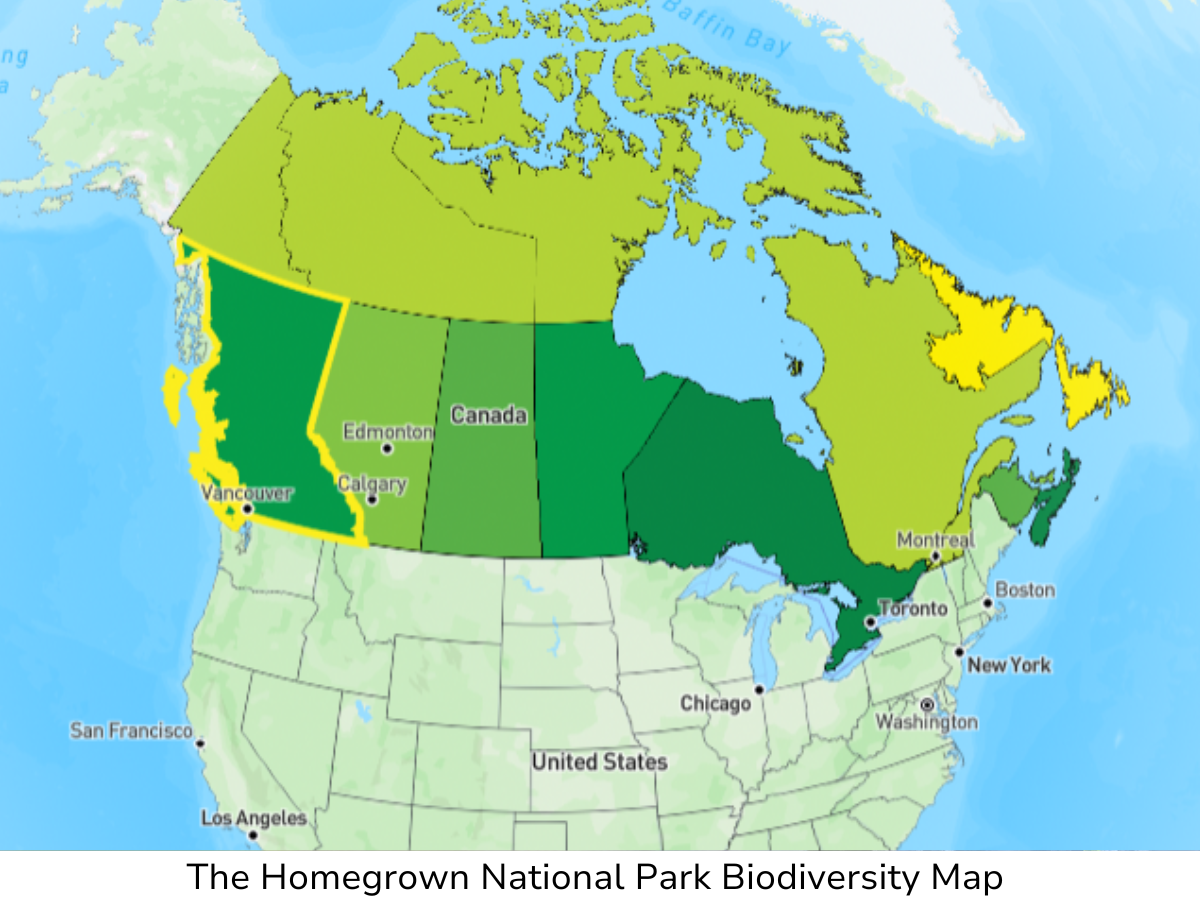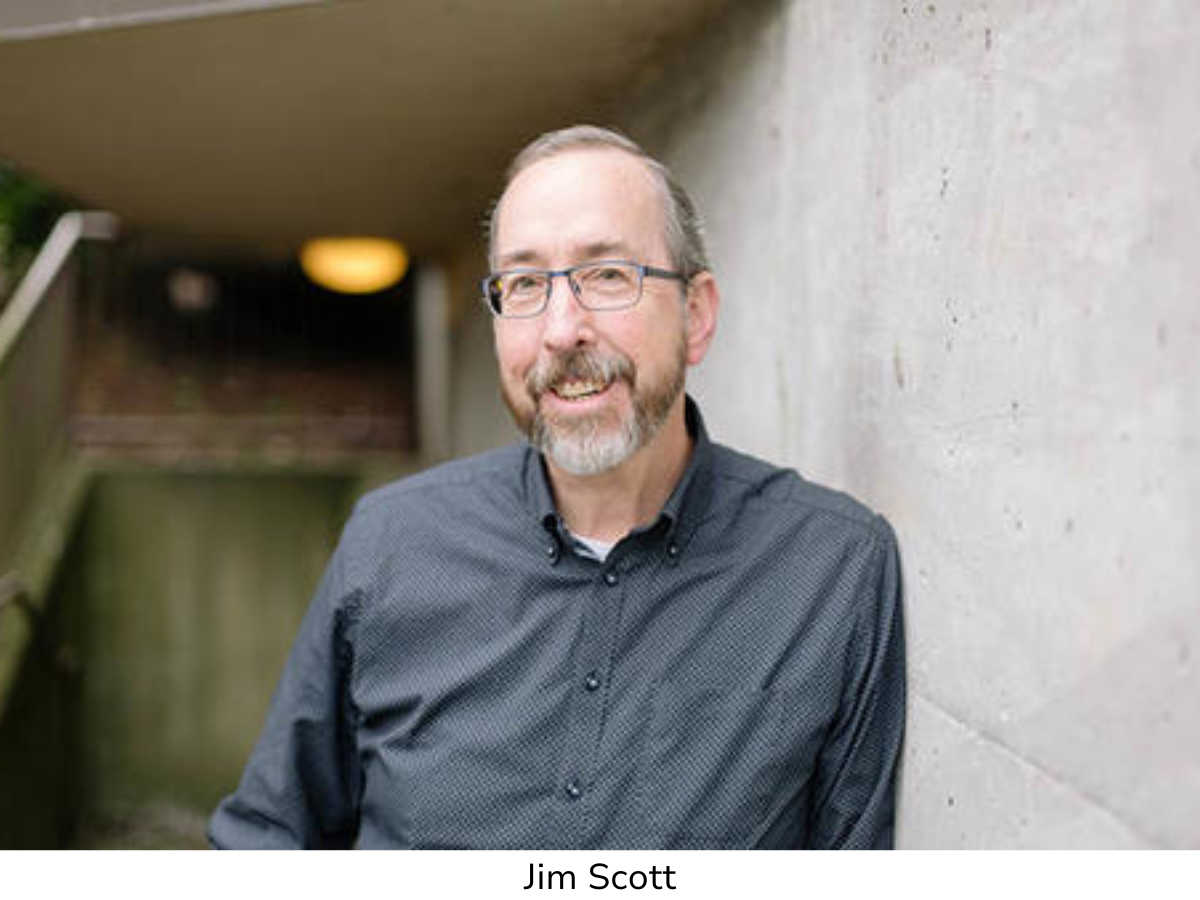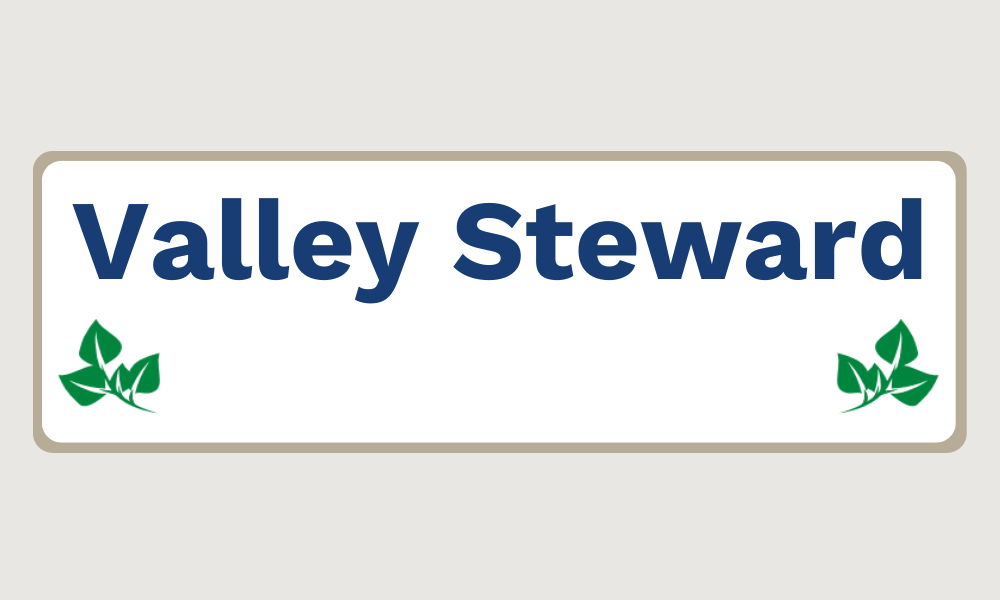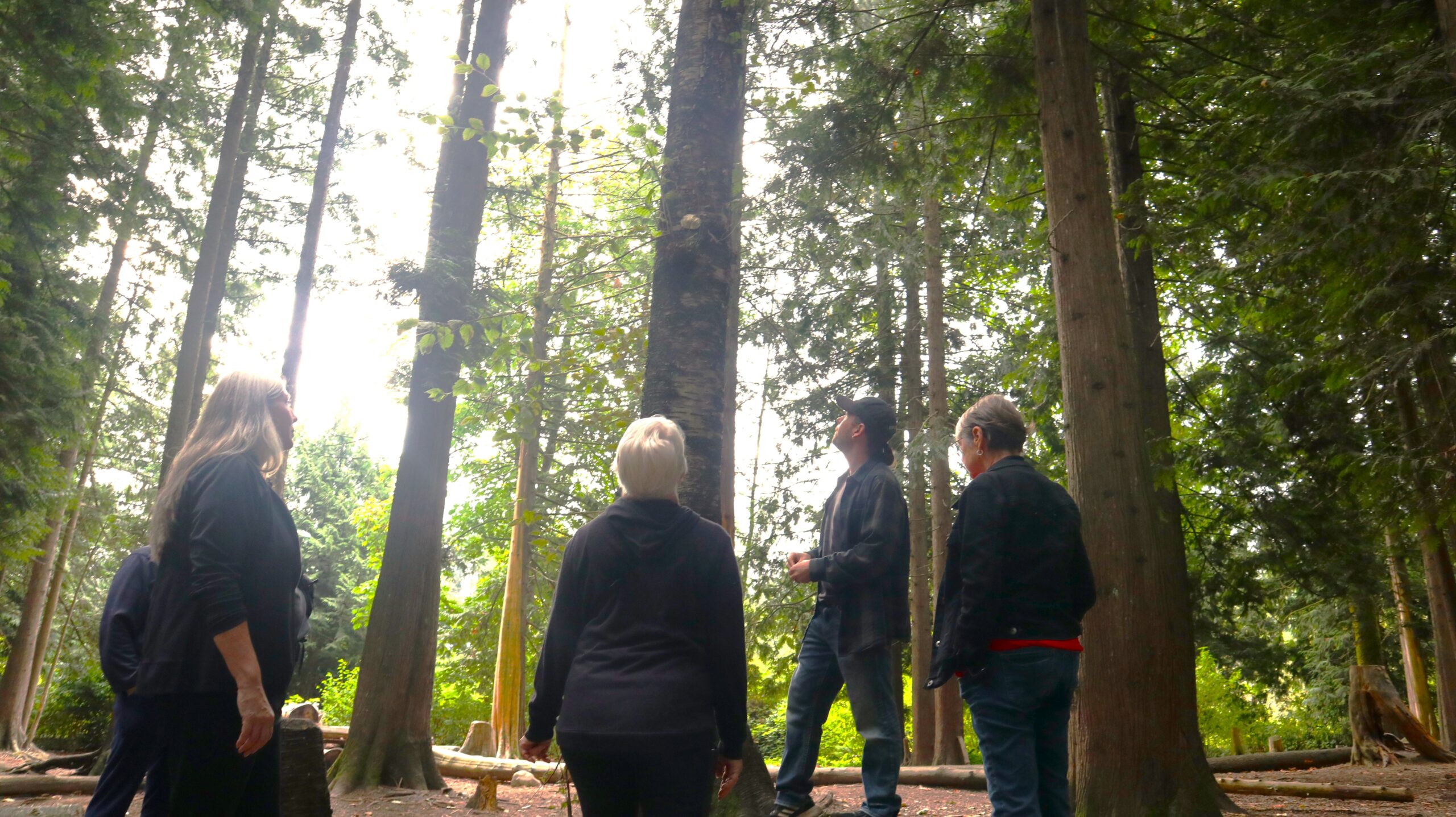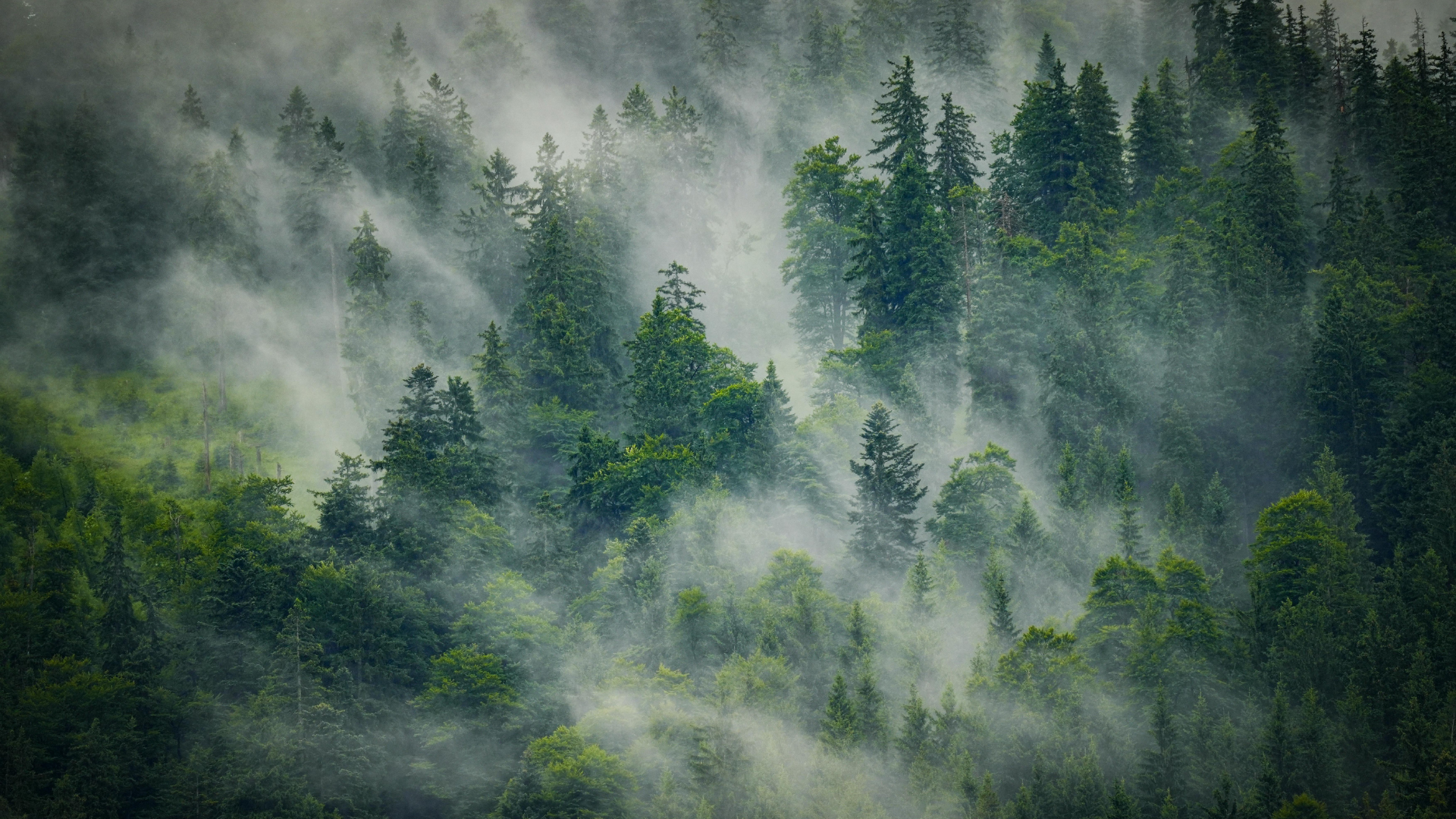When we first met Jim Scott, a Fraser Valley resident and retired professor, at our Native Plant Sale in 2024, we quickly discovered he was much more than a passionate gardener. Jim is a champion of the Homegrown National Park (HNP) grassroots movement. This growing initiative aims to address the biodiversity crisis by inspiring millions of people across North America to plant native plants and remove invasive plants.
When a heat wave devastated his grass lawn in the summer of 2001, Jim’s journey to help restore habitats began. Seemingly overnight, his once-vibrant greenspace became a brown and barren wasteland. Rather than accepting this as the new normal, Jim was motivated to research drought-resistant alternatives. He discovered Bee Turf, a lawn alternative from West Coast Seeds composed of clovers and small wildflowers. Jim planted this seed blend and watched as his property underwent a second transformation—this time, one that was markedly more positive and sustainable.
